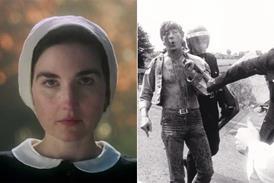BFI Stats Yearbook reveals export boost, an ageing audience and an under-representation of women directors, writers.
The BFI Statistical Yearbook has revealed a continuing trend for older audiences in the UK and a worrying decline in the number of women writers and directors of UK films.
Over 45s flocked to UK cinemas in 2012, accounting for 36% of cinema-goers aged 15+. It marks the first time the group became the single largest proportion of the UK’s audience.
The 15-24 and 25-34 audience continued to decline with the former decreasing from 31% in 2011 to 25% of the total in 2012, the lowest number on record. The 25-34 age-range posted its second-lowest number on record at 19%.
Filmgoers aged 35-44 made up 20% of the total - joint highest for this age group on record.
Films with an above average audience in the 45-54 age group were Salmon Fishing In The Yemen, The Hobbit: An Unexpected Journey and The Best Exotic Marigold Hotel.
Factors accounting for the trend include more films aimed at older audiences, the economic downturn and an increase in ticket prices.
Fast figures
Attendance (age groups)
15-24: 25%
25-34: 19%
35-44: 20%
45+: 36%
While last week’s Creative Skillset census on diversity in the creative industries highlighted worrying trends around the lack of black, Asian and ethnic minorities in the film industry, the BFI’s Statistical Yearbook highlighted the depressing lack of women directors and writers in the film industry.
UK women film writers declined from 18.9% of the total writers in 2011 to 13.4% (25 writers) in 2012, the second-lowest number in five years. The picture for women directors is even bleaker, with men accounting for 92.2% of directors on UK films in 2012, an increase of more than 7% year-on-year. This translates into 165 male directors and 14 female directors.
Asked by ScreenDaily about the decline in UK women film writers and directors and the decline in BAME across the creative industries, BFI deputy CEO Tim Cagney said: “We are very concerned about these trends.
“We are working closely with Creative Skillset to actively target particular members of communities across the UK who might not think of the film industry as an industry for them. We are putting a number of structures in place including a new talent network”.
Ben Roberts, director of the BFI Film Fund, added: “We have noticed that applications [from minorities] have been low. Our response to that must be in the next round of filmmakers and writers we support.
“In our first feature strand this year so far 80% of the supported films are from women directors. 60% of those projects were written by women. One third of our Vision Awards went to women-led companies. We have three projects from black women filmmakers in production this year.
“We are trying to address this issue without being a box-ticking organisation.”
Box office
In good news for film export, UK films, including UK-US productions such as Skyfall, brought in $5.3bn at the global box office, according to the Yearbook. The figure represents a 15% share of the world market and is the third-highest on record. However, it was marginally down on 2011’s 17.2% share.
There were 647 films released in the UK during the year – more than 12 per week – and 89 more than in 2011.
In the UK, box office receipts were £1,099m - up from £1,040m in 2011. Admissions increased by 0.5% year-on-year to 172m.
Skyfall led the way with £102.8m and helped Sony to an 18% market share, the biggest among distributors.
The top 20 films accounted for 46% of the total.
Fast figures
UK box office 2012: £1.099bn
Admissions 2012: 172m (+0.5%)
Top film: Skyfall: £102.8m
UK films at global box office: $5.3bn
The number and box office of foreign language films increased in the UK, with Hindi-language films leading the way among non-English language films with the highest box office share of 1.2%.
Box office share of UK independent films was 9%.
A total of 249 films were produced wholly or in part in the UK, down from 331 in 2011. There were 181 UK domestic features, down from 250 in 2011.
Inward investment spend declined from more than £1bn in 2011 to only £629m in 2012 (the number of features with a £30m+ budget decreased from 17 in 2011 to nine in 2012) but executives expect that number to increase in 2013 with a collection of high-profile films readying to to shoot in the UK.
Domestic spend rose from £194.6m in 2011 to £225.7m in 2012.
A total of 115 of the 181 UK features had a budget of less than £500,000.
Fast figures
Films produced in UK: 249
UK films produced in UK: 181
Inward investmest 2012: £629m
Inward investment 2011: £1bn+
Domestic spend 2012: £225.7m
Domestic spend 2011: £194.6m
























3 Readers' comments